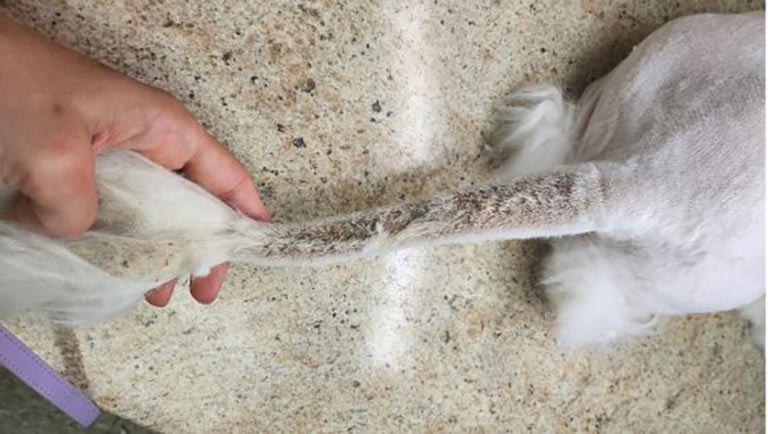Summer brings a host of joys for pets and their owners, from outdoor play to longer walks. However, the season also presents unique challenges that require careful attention to ensure your pets remain safe and comfortable. From managing the risks of overheating and protecting sensitive paws to safeguarding against toxic plants and hazardous chemicals, there are several key considerations to keep in mind. Additionally, activities like swimming, exposure to fireworks and yard safety demand specific precautions to prevent distress or harm. This blog will help you navigate these summer challenges and provide practical tips.
Overheating Signs in Pets
Overheating in pets is a serious concern, especially during hot weather. Key signs to watch for include excessive panting, drooling and difficulty breathing. Pets may also exhibit increased heart rates, lethargy and weakness. In severe cases, vomiting, diarrhea and even seizures can occur. It’s crucial to keep pets cool and hydrated, and seek immediate veterinary attention if these symptoms are observed.
Fresh, Clean Water Always Available
Hydration helps regulate body temperature and prevents overheating. Ensure water bowls are placed in cool, shaded areas and refill them regularly to keep the water fresh. Consider using multiple water stations around your home and yard to make it easy for pets to stay hydrated. Ice cubes can be added to the water to keep it cool longer. Keeping your pet properly hydrated is a simple yet crucial step in maintaining their health and comfort during the heat.

But Don’t Let Them Drink Too Fast
Excessive heat can tempt your pet to drink too much water too quickly, leading to painful bloating. To prevent this, control when and how much they drink by offering small-to-moderate amounts of water at a time. Place multiple small bowls throughout your home or yard to curb the urge to drink all at once. Limit water intake 30 minutes before any intense exercise, and take their bowl away if they start guzzling. You want your pets to drink enough to satisfy their thirst and cool down without risking any harm, so encourage slow and steady hydration.
Never Leave a Pet in a Parked Car
Never leave pets unattended in a vehicle, even for a short period. The temperature inside a hot vehicle can rise dramatically and dangerously fast. Within just 10 minutes, it can increase by nearly 20 degrees, and in 20 minutes, it can soar by almost 30 degrees. After one hour, the temperature inside a car can be over 40 degrees higher than the outside temperature, creating a lethal environment for pets. It’s a common misconception that cracking windows helps; in reality, it has no significant effect on reducing the inside temperature.
Instead, take your pet with you or leave them at home in a cool, safe environment. If you see a pet locked in a hot car, take immediate action by alerting nearby authorities or animal control.

Summer Grooming
Consistent grooming during the summer helps keep your pet cool and clean. While many pet owners think shaving their dog will make them more comfortable in the summer, it actually doesn’t. Instead, it disrupts their natural ability to cool down. A dog’s coat is designed to protect them from sunburn and help regulate their temperature.
For double-coated dogs, this is especially important, and their coat should never be shaved, as their hair may not grow back properly. Shaving a double-coated dog may result in an uneven, unkempt appearance and puts your dog at risk for post-clipping alopecia.
Instead of shaving your dog, opt for a deshedding treatment to remove any dead coat. This is a highly sought-after service right before hot weather starts, but it’s also helpful during the summertime as well. Desheds help keep your pet comfortable and maintain the health of their coat.

Managing Heat and Paw Protection
During the summer months, temperatures can change dramatically throughout the day. The hottest and most dangerous time for your pet to be outdoors is typically midday, between 11 am and 3 pm. To keep your pets safe and comfortable, exercise your dogs or let your cats out in the early morning or late evening when the sun is less intense and temperatures are lower.
Paw Safety
Being close to the ground, your pet’s body can heat up quickly, and their sensitive paw pads can burn. To protect them, keep walks to a minimum during peak heat times and always check the ground temperature before heading out. A simple test is to place your bare hand on the surface; if it’s too hot for your hand, it’s too hot for your pet’s paws.
This is especially important for surfaces like sand, which can become dangerously hot—over 100 degrees Fahrenheit even when the air temperature is only 75 degrees, and exceeding 120 degrees at 90 degrees ambient temperature.

Keeping Your Dog Safe Around Water
Water can be a dangerous place for dogs, so never leave your pooch unattended around a pool. Ensure they are experienced swimmers before allowing them in the water. If your dog needs help with buoyancy, fit them with a life jacket designed for pets. Regular breaks are essential to prevent exhaustion, as even the most energetic dogs can tire quickly.

Yard Safety
Toxic Plants
To keep pets safe in your yard, it’s important to be mindful of toxic plants. Many common garden plants, such as lilies, azaleas and oleander, can be harmful or even fatal if ingested by pets. Other dangerous plants include daffodils, fox glove and sago palms. It’s a good idea to identify and remove toxic plants from your yard or keep them in areas inaccessible to your pets. Opt for pet-safe plants like marigolds, petunias and sunflowers to create a safe outdoor space.

Herbicides and Insecticides
Herbicides and insecticides can also pose serious health risks to pets. Chemicals used to treat lawns and gardens can be toxic if ingested, inhaled or absorbed through the skin. Always check product labels for pet safety and avoid using chemicals that could harm your pets. Consider using pet-safe alternatives, such as organic or natural products, and apply them according to the instructions. Supervise pets when they’re outside to prevent accidental ingestion of harmful substances.

Fireworks
Fireworks can ignite a dog’s anxiety and cause significant stress. The summer months can be challenging for pets and their owners as the loud booms can disrupt sleep and create a tense environment. To help your dog cope, create a safe room far away from the noise, filled with their favorite toys, blankets and snacks. Additionally, consider dog relaxation training or conditioning to reduce their reaction to fireworks. These solutions can help your pet feel more secure and make summer a more peaceful time for both of you.

Make it a Great and Safe Summer
Whether it’s by managing heat exposure, safeguarding against toxic plants and chemicals or creating a secure environment during fireworks, each precaution you take contributes to a healthier and more enjoyable summer for your furry companion. Prioritizing their needs and well-being allows you to make the most of the warm weather while keeping your pet safe and happy. With these precautions in place, you can confidently enjoy all the joys of summer with your beloved pet by your side.



































